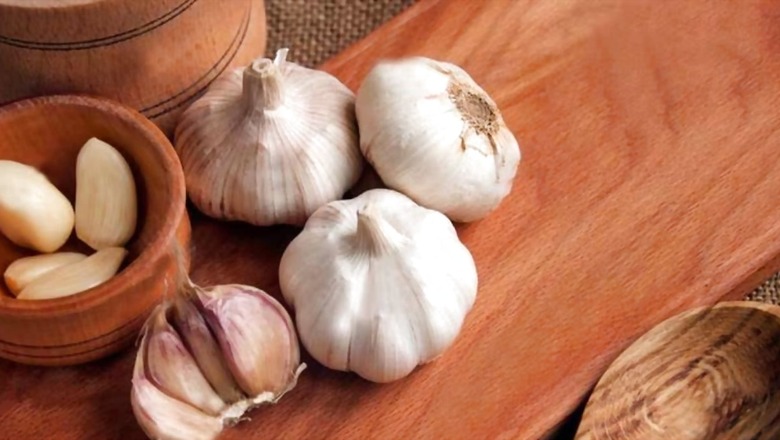
views
Garlic is a staple in many kitchens. While Indian garlic is commonly used, Chinese garlic, which is currently banned in India, is less well-known. When buying garlic, it’s important to carefully inspect it to ensure you’re getting a high-quality product.
Following a ban in 2014, Chinese garlic has once again entered the Indian market. As per reports, traders in Gujarat’s Rajkot held a day-long protest after several bags of Chinese garlic were discovered at Gondal Agriculture Produce Market Cooperative (APMC).
Chinese garlic is reportedly different due to its size and fragrance, and is less expensive than the local crop, making it “profitable for smugglers and agents.”
So, what exactly is Chinese garlic?
Chinese garlic, as the name implies, is a variety of garlic that is mostly farmed in China and exported to many nations across the world. It usually has smaller lights that range in tint from pale white to pink. Chinese garlic is commonly used in Chinese and Asian dishes, including noodles, stir-fries, and soups. Despite its widespread use, Chinese garlic has been subjected to extensive scrutiny and limitations in India.
Why is Chinese garlic banned in India?
Excessive pesticide use: Chinese garlic is recognised for its heavy usage of pesticides and chemicals during cultivation. These compounds have the potential to endanger consumers’ health. Indian garlic, on the other hand, is grown with the least amount of chemicals and fertiliser, focussing on natural farming practices.
A professor from Jadavpur University during an interview with The Times Of India shared that that Chinese garlic is treated with a fungicide containing methyl bromide to prevent fungal growth for up to six months. Further, the professor said that Chinese garlic is bleached using harmful chlorine, a process that kills insects, that prevents sprouting and whitens the bulb.
Quality requirements: Chinese garlic often fails to meet India’s quality standards. In some cases, Chinese garlic contains harmful chemicals or synthetic components.
Economic effect: Chinese garlic’s lower pricing compared to Indian garlic poses a big challenge to local growers. The entry of cheaper Chinese garlic could result in significant financial losses for Indian garlic growers. To defend Indian farmers’ interests and consumer safety, the government has banned Chinese garlic.
Differences between Indian and Chinese garlic
- The physical appearance: Chinese garlic is smaller in size and might be bright white or pink. Indian garlic, on the other hand, is larger and has peels that range in colour from white to pink to light brown. The differences in size and hue reflect the various growing environments and procedures.
- Taste and aroma: Indian garlic is famous for its pungent odour and robust flavour. Because of its strong flavour, it is a popular ingredient in Indian cuisine. Chinese garlic, on the other hand, has a gentler aroma and taste, which may be less suitable for some culinary applications.
- Cultivation methods: Indian garlic is often farmed using traditional methods, with a focus on natural farming practices and minimal chemical application. This method yields a more organic and health-conscious product. In contrast, Chinese garlic is frequently produced using modern agricultural techniques that rely extensively on pesticides and chemicals to improve yield, raising worries about its safety and health impact.













Comments
0 comment